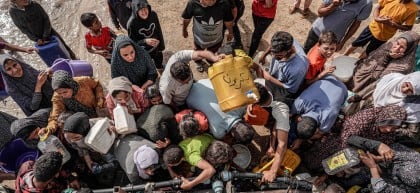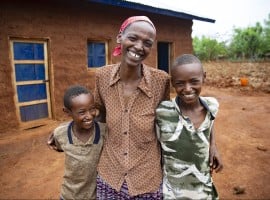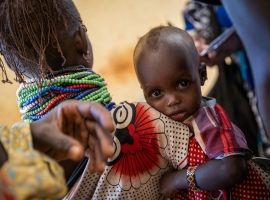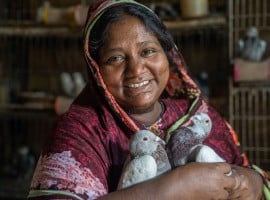
Read our 2024 annual report

Knowledge Hub
The world’s 10 poorest countries in 2025
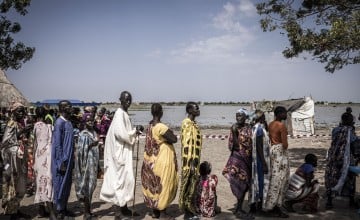
At Concern, we go where we are needed most in our fight against extreme poverty. But where is that, exactly?
What determines the world’s poorest countries isn’t as clear-cut as dollars and cents. Poverty defines an economic situation in a specific moment in time, and is so multi-dimensional as a concept that any ranking is going to be incomplete and not fully representative.
What's more, categorising the poorest countries in the world isn’t as simple as ranking total wealth. Data are often hard to come by in some of the most vulnerable countries, and relying on the gross domestic product (GDP) as a ranking factor doesn’t account for all of a country’s wealth.
So for the purposes of this ranking, we’re going to focus on the 2025 Human Development Index (HDI). Published annually by the United Nations in their Human Development Report, this ranking takes into account:
- Gross National Income (GNI)
- Life expectancy at birth
- Expected and mean years of schooling
- The UN’s HDI value
It's never a complete picture, but it gives us a more intersectional look at how we may approach ranking countries around poverty.
While poverty is a measurable fact of life, it does not ultimately define a country, a community, or an individual. The fight against poverty, if it is to be won, rests in the hands of the people we work with. Our job is to help them find the tools and resources they need.
10. Yemen
Nearly a decade of conflict has left nearly 83% of Yemenis living below the poverty line, making it the “poorest” country in the Middle East (and the only country on this list not located in Africa).
This is due in large part to a common economic impact of war: conflict leads to economic contractions and inflation, just as many civilians are left without steady work, salaries, and social safety nets. A UN-brokered truce in 2022 led to some improvements in the economy, however a blockade on oil exports in 2023 undid that work. Addressing the historical economic inequalities within this country will be one key to creating lasting peace.
» Learn more about the crisis in Yemen

9. Sierra Leone
While Sierra Leone enjoyed a relatively smooth transition to peace after the end of a decade-long civil war in 2002, the effects of conflict on poverty and development are still very much felt, alongside more recent shocks and setbacks.
After years of economic improvement, the World Bank recorded a dramatic increase in inflation rates between 2021 and 2022 (11.9% and 27.2%, respectively). This is reflected in the poverty rates for the country: An estimated 26% of Sierra Leoneans live below the international poverty line across the country, and that figure jumps to 60% in rural areas.
» Learn about Concern’s work in Sierra Leone
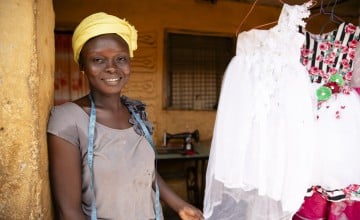
8. Burkina Faso
Political unrest, conflict, and climate change have left Burkina Faso facing the worst humanitarian crisis in the country’s history — and a crisis largely forgotten in western media. With limited natural resources and ongoing instability, more than 40% of Burkinabè live below the poverty line. Lasting improvement in poverty rates hinges on how well the security situation holds.
» Learn more about the crisis in Burkina Faso
» Learn about Concern’s work in Burkina Faso

7. Burundi
A landlocked country in East Africa, bordering Rwanda, the Democratic Republic of the Congo, and Tanzania, Burundi is one of the most densely-populated countries in the world, with roughly 63% of that population living below the poverty line. Many are still recovering from a bloody civil war that ended in 2005, and dealing with the impacts of climate change in a country that is 80% agrarian.
The country has seen some sustained economic growth, with an increase of 3.5% estimated as of April 2025 (compared to a 2.7% growth in 2023 and 1.8% in 2021), and the country is projected to be classified as “developed” by 2060. However, as the World Bank notes, this will require sustained structural and financial reforms to achieve.
» Learn about Concern’s work in Burundi
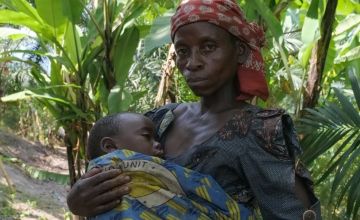
6. Mali
The fourth-largest country on the African continent, Mali’s capital of Timbuktu once flourished as a trading post. A neighbour of Burkina Faso (No. 8) and Niger (No. 5), it now faces many of the same security challenges as other countries in the Sahel, as well as the impacts of the climate crisis. Between national and regional conflict over the last 12 years and the long-term effects of the pandemic, the country has also seen rapid increases in poverty levels, with roughly 20% of Malians living below the poverty line.
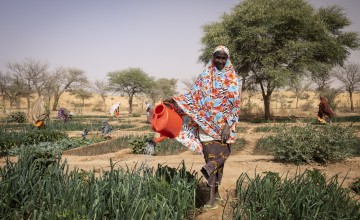
5. Niger
According to the World Bank, the percentage of Nigeriens living in poverty sits at 45.3%, but with the expectation that it will drop to 35.8% in 2027 thanks to progress within the agricultural industry. However, the country’s ongoing challenges (and humanitarian underfunding) still place stress on the most vulnerable Nigeriens via inflation and rising costs for food and other essentials.
» Learn about Concern’s work in Niger
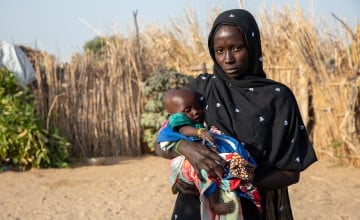
4. Chad
Despite a $4 billion pipeline that links the country’s oil fields to coastline terminals, Chad is one of the world’s poorest countries owing to a lack of infrastructure and both local and regional conflict. This has left over 44.8% of the population living below the national poverty line. The crisis in Sudan has complicated matters for the country, which has become a major host community for refugees fleeing the neighbouring conflict. This is one of several barriers the country faces to ending poverty, including internal and regional insecurity and various climate shocks.
» Learn about Concern’s work in Chad
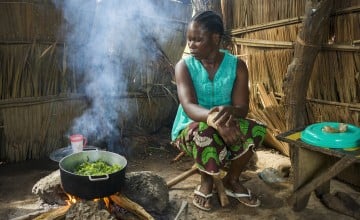
3. Central African Republic
Over a decade of violence in the Central African Republic may have passed, but the country has not yet been able to enjoy the full dividends of peace. Violence continues to hinder reconstruction and development, with the World Bank declaring in 2022 that economic activity had “ground to a complete halt” following major flooding and fuel shortages. Most recent reports reveal that approximately 70% of the country is experiencing poverty.
» Learn about Concern’s work in the Central African Republic
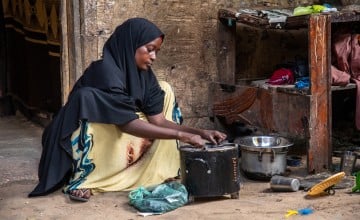
2. Somalia
Somalia has faced a decades-long cycle of interlocking crises, including severe droughts, conflict, hunger, and weak governance. The situation has worsened in the first half of 2025, with worsening security and environmental conditions pushing more people into poverty amid escalating food prices and inflation. Roughly 60% of Somalis live below the poverty line in 2025. Despite the challenges at hand, the World Bank estimates that poverty rates will decline by one percentage point each year between now and 2027 — a small win, but a win nonetheless.
» Learn more about the crisis in Somalia
» Learn about Concern’s work in Somalia

1. South Sudan
The youngest country in Africa is also the poorest: Since gaining independence in 2011, South Sudan has faced two periods of civil war, with a current — fragile — peace deal in place. The country is also susceptible to droughts and floods, further setting back progress. An estimated 80% of the country’s population live below the poverty line, yet the World Bank estimates that poverty could become universal in the country by the end of 2025.
» Learn more about the crisis in South Sudan
» Learn about Concern’s work in South Sudan
Concern’s work to end poverty
Ending poverty is the core mission of Concern. All of our programmes and approaches are designed to further progress towards this goal by addressing some of the root causes of poverty.
Our approaches to this are rooted in an understanding that poverty is a cycle: Those with the fewest resources and methods to handle risks (such as natural disasters or conflict) stand to lose the most, and have even fewer resources when the next emergency hits. These pockets of poverty become the hardest to eliminate. We work to address both these inequalities and risks, enabling communities — especially those furthest behind — to build both a safety net for immediate shocks and livelihoods to support themselves and their families in the longer term.
This approach allowed us to reach 27.3 million people across 27 countries and territories last year, with programmes focused on emergency response, livelihoods, health and nutrition, gender equality, education, and climate response.
